White Stork: Why Do They Kill Their Young
Key Points
- Mother storks select the smallest and weakest hatchling and drop it from the nest or spear it to death to increase the survivability of the other hatchlings.
- Infanticide is the killing of an infant or child under one year old.
- White storks are symbols of good luck and fertility because their mating and migration seasons line up when families are ready to give birth.
Everyone knows the adage of storks gently delivering crying babies in their beaks to families ready to have a child. It is a simple and harmless way of teaching young children where babies come from without getting into the biological and anatomical details of human reproduction.
However, storks are not as wholesome as they appear on the surface. Recordings of white storks circulate the internet of these radiant birds murdering their offspring.
What would drive storks to do such a horrible crime? Why are these birds associated with giving a family a newborn baby if they are killing theirs? Are other birds this twisted or are white storks the odd ones out?
Like all stories and fables, there is a long history behind this imagery.
Basics on White Storks
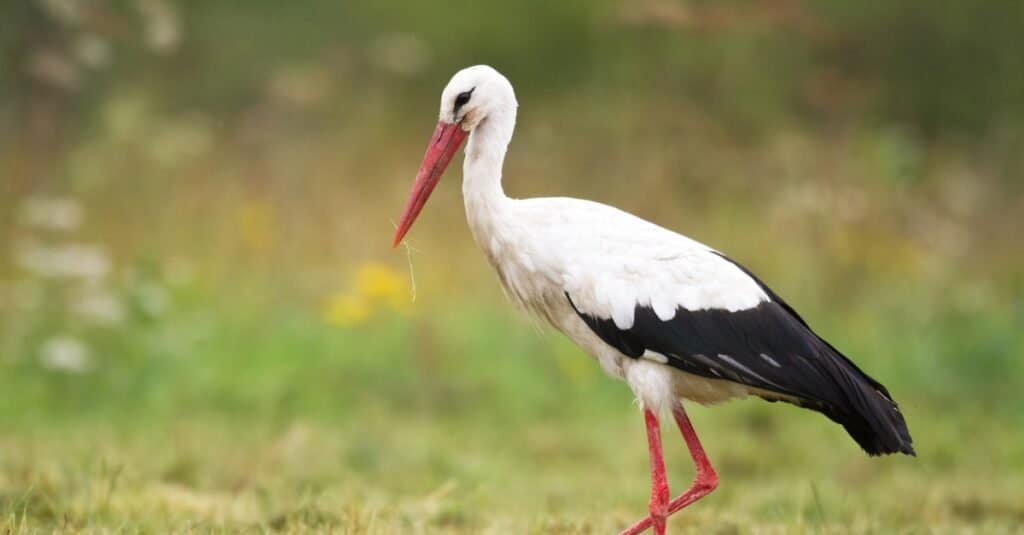
©Marcin Perkowski/Shutterstock.com
Ciconia ciconia, the white stork is one of the most well-recognized birds in the animal kingdom, right after owls and some hawks or eagles. Storks are prominent throughout several stories and admired for their gleaming white feathers and black trim. Their long legs and beak elevate them above the grass and the black lining around their eyes gives them a sense of mystery and intrigue.
They live across Europe, Asia, and Africa, migrating between the countries at the end of summer.
White storks feed on an assortment of insects, small mammals, bird eggs, fish, crustaceans, and amphibians.
They do not have many natural predators outside of habitat loss from humans. Raccoons, skunks, and other birds will poach their eggs when the nest is unprotected.
White Stork Reproduction
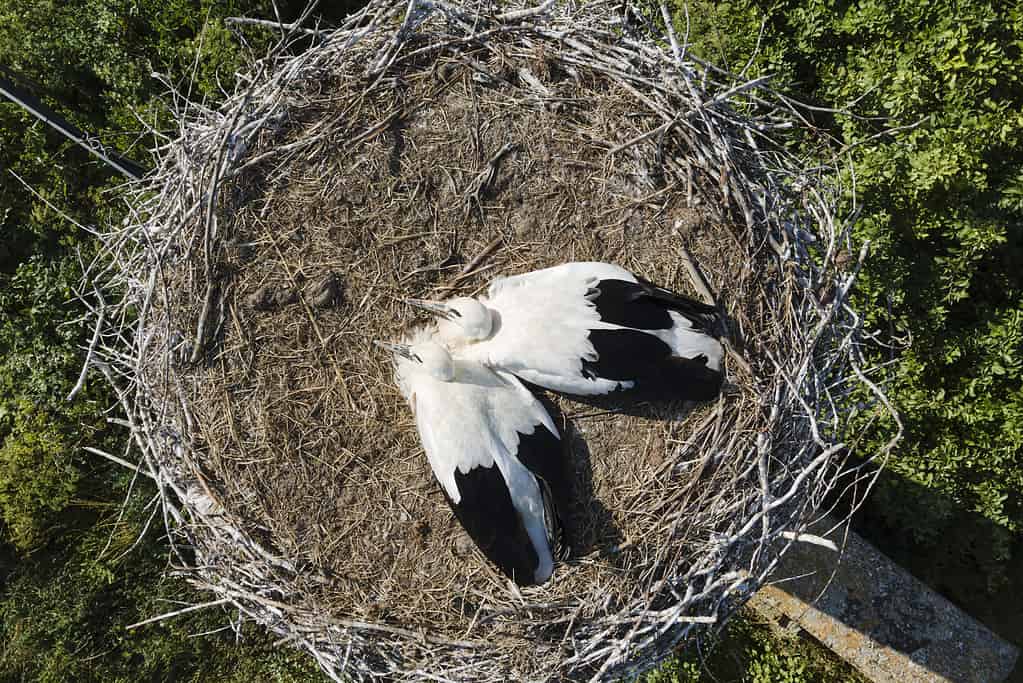
©esvetleishaya/iStock via Getty Images
Storks are one of a handful of birds that mate and guard the nest together. When a stork reaches three to five years old, they will find a suitable mate and build a nest of large sticks in tall trees or on rooftops of residential or business buildings. One of the storks will signal the nest is complete by adding a small leaf hanging over the edge.
Female white storks lay a clutch of two to four eggs which will hatch after 33 days. Both parents tend to the hatchlings for 58-64 days before they leave the nest. Some hatchlings will return to the nest for another few weeks before becoming independent.
By the end of summer, the storks will migrate to warmer weather and return to their nest in the spring. A pair of storks will use the same nest for several years before building a new one.
Why Do Storks Kill Their Young
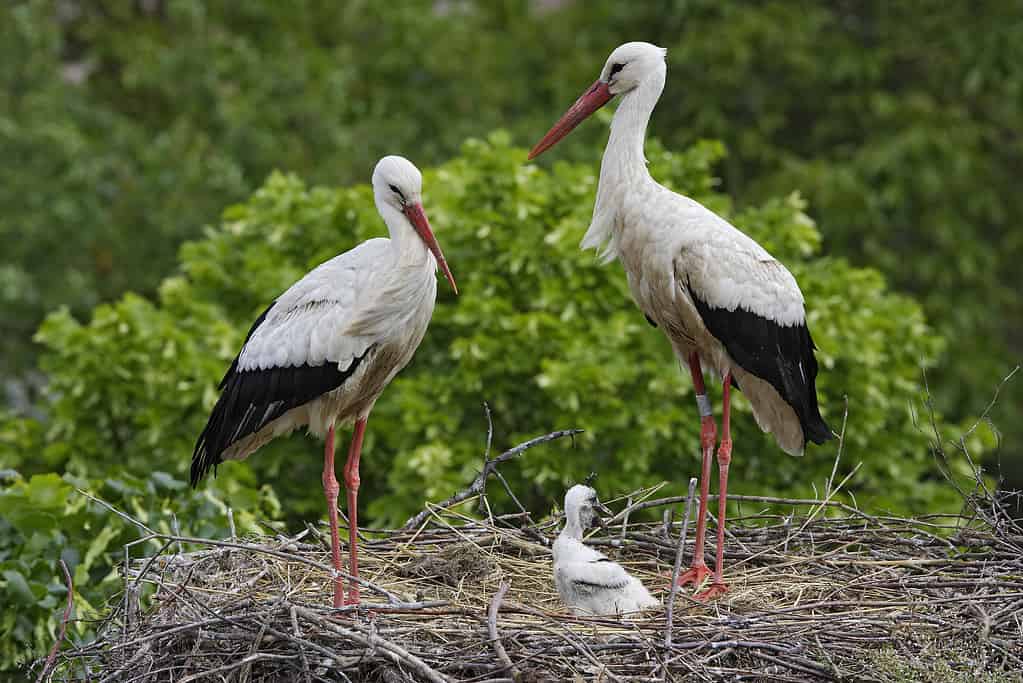
©Michel VIARD/iStock via Getty Images
From the outside, white storks sound like very caring and loving parents to watch over their young. However, white storks will perform infanticide more than other birds. Infanticide is the killing of an infant or child within one year of age.
A three-year study in 1992 observed several white storks practicing infanticide and why. The results indicated that 9 of 63 couples performed infanticide of the smallest, weakest, first hatched, or last hatched. Also, the males would remove the nestmate eight out of nine times.
White storks perform infanticide for the following reasons:
Survival of the Most Likely
When storks are tending to their young, the parents may notice one of the hatchlings not growing or developing as quickly as the others. The eggs hatch at various times, but the storks know time is of the essence to avoid predators and prepare to migrate. If they notice one infant seems too weak, they will drop it from the nest to kill it early rather than having it become prey later.
Shortage of Food
Both parents must be constantly hunting for food to feed themselves and their young. When there is not enough food to feed all their young, the father will select the smallest hatchling and drop it from the nest to allow the others more food. This method reduces the number of mouths to feed and increases the chance the remaining hatchlings will survive.
Higher Nesting Maintenance
Stork parents perform internal calculations regarding a benefit-to-cost ratio regarding how much energy to use when raising hatchlings. Larger nests with four or five hatchlings require more time, energy, and resources than a nest with two or three. The longer it takes to care for the hatchlings, the more energy the parents lose. To save themselves energy and limited resources, they may remove a hatchling to make the nest easier to parent.
Do Other Birds Perform Infanticide
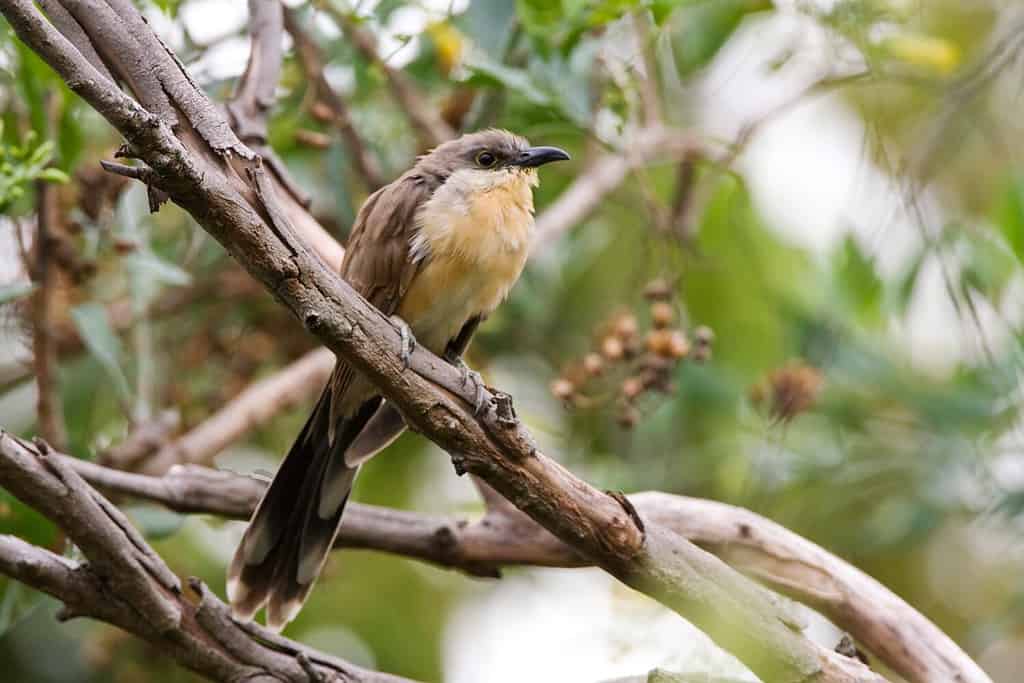
©Traveller MG/Shutterstock.com
Surprisingly, white storks are not the only animals capable of performing infanticide. Records show many birds will attack or kill their offspring for a multitude of reasons such as limited resources, removing a rival’s brood, or as an elaborate scheme to give parenting to other birds.
Examples of bird infanticide are:
- Bald eagle males will kill their youngest and weakest hatchlings to manage resources or in a cannibalistic action to feed the other hatchlings when food is scarce.
- Cowbirds and cuckoos will find another bird’s nest, remove the resident eggs, and lay their own eggs as a replacement. The cowbird or cuckoo leaves, letting the other bird roost and raise the infants in a forced adoption process.
Why Are White Storks Linked to Delivering Babies
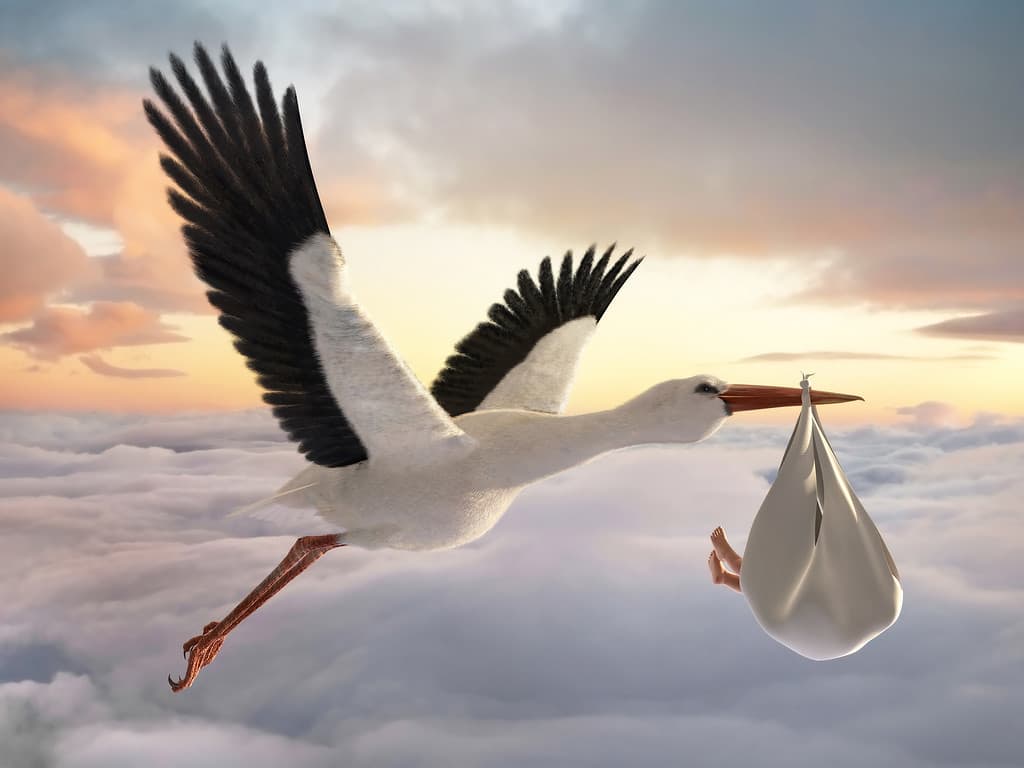
©james steidl/iStock via Getty Images
It seems very ironic that a bird capable of killing its offspring will be associated with delivering babies to a welcoming family. The idea of storks delivering babies is not as graphic as a stork literally dropping an infant at a family’s doorstep, but a symbolic image of good luck and coincidental timing.
Coincidental Timing
Around 600 years ago, human couples would marry during the summer. Summer is associated with fertility because of the sun, warmth, and ability to raise crops to last the winter. Ideally, couples will consummate their union around the same time white storks leave for their annual migration.
White storks return to the European regions nine months later in the spring to build a nest and lay their eggs. At the same time, pregnant mothers would start giving birth as the storks came back to roost. Human creativity and symbology linked the events together to associate white storks as a good omen that babies are about to be born.
Fairy Tales
Additionally, classic fables like “The Storks” by Hans Christian Andersen created beautiful stories parents could share with their children. The fable tells of storks plucking dreaming infants from ponds and lakes to deliver them to good families. Consequently, families who misbehaved and were deplorable were given dead infants on their doorstep.
Parental Censorship
As children grow up, they will ask questions about the world around them. Naturally, when a single child suddenly sees an infant come out of practically nowhere, they will ask how and where it came from.
Sex and reproduction were not topics of discussion for civilized society at the time. To avoid the vulgar details of describing human biology and anatomy, parents used white storks as a metaphor to explain where babies came from.
Collective Unconscious
Over time, other stories and children’s books illustrated storks as delivering babies and it became common knowledge to associate white storks with babies. Parents did not question why storks were related to babies or how they treated their own offspring. Humanity accepts the metaphor and recites it to future generations.
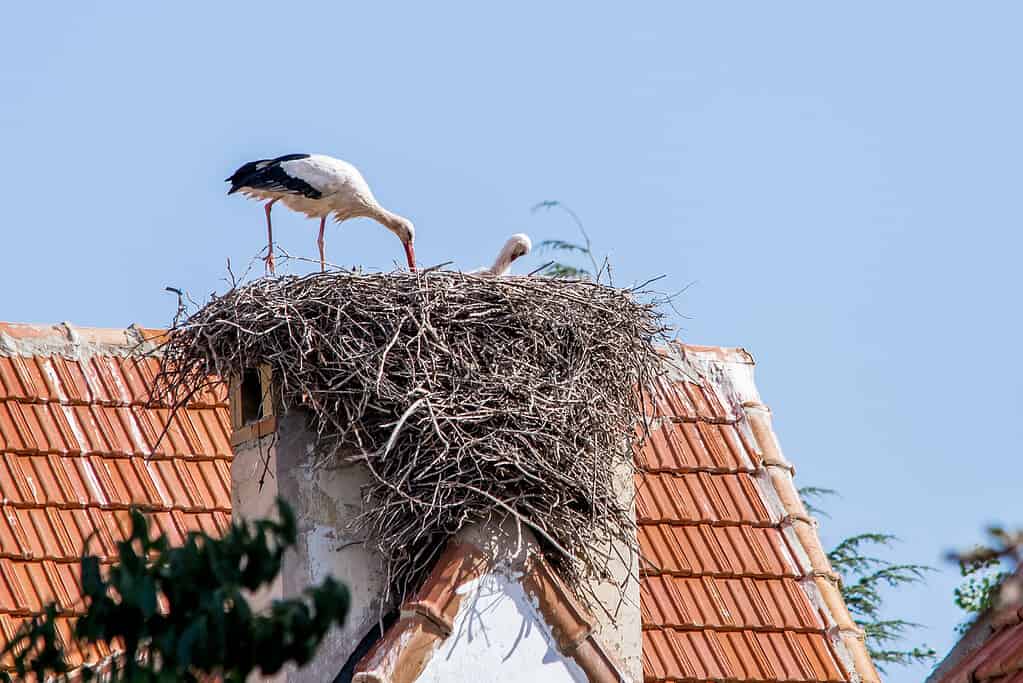
©Wirestock/iStock via Getty Images
White storks are not evil birds for killing their young, nor are they bad parents. They are birds trying to raise their infants the best they can, with the harsh reality that nature is a cruel place. By weighing the overall benefits and costs, white storks will sacrifice a young and underdeveloped hatchling if it means the survival of the nest.









